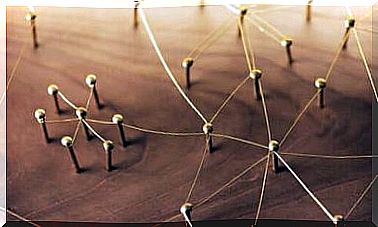The Importance Of Biases In Psychological Distress

What is bias? It is the brain’s tendency to give more relevance and process one type of information over another. It might seem like a tricky thing to understand, I know. Therefore, in this article I will explain in a pleasant and concrete way how biases influence our emotions.
So let’s look at the differences between normal and negative biases. The latter will make the discomfort we feel greater. Thus, to avoid their undesirable effects, it is essential that we know how they arise and how they act in our thought processes.
What are cognitive biases?
Every day we come across a considerable amount of information, which comes from both outside and inside. If our brain had to process all this information, there would be no time for anything else. In this way, he would not be able to fulfill the rest of the functions for which he has competence and responsibility.
That’s why our mind takes some “shortcuts” when interpreting the information we receive. These are cognitive biases. Thus, we all have a certain tendency to attend, interpret and remember certain information to the detriment of others. From this, we have three types of bias:
- Attentional: is the tendency to respond to one type of stimulus compared to others when they are presented at the same time.
- Interpretive: is the tendency to interpret situations in a certain way.
- From memory: is the tendency to recall certain events to interpret the current situation.

the attentional bias
A priori, having biases is normal, necessary and beneficial, as it saves us a considerable amount of mental resources. As already mentioned, they save time and energy for our brain in processing information and allow it to focus on the rest of the tasks it must perform.
So when do they become harmful to us? Regarding the attentional bias, this occurs when it is related to negative stimuli. That is, when a person focuses more on information that might be threatening or harmful rather than neutral or beneficial.
For example, a person would have a negative attentional bias if he focused on the listener who is frowning, when there is another one who is paying attention, in a situation where he is speaking in public. An example of a person who has an attentional bias that will not harm her would be if she concentrates on other aspects, such as the fact that there is someone with the same computer as her among the listeners.
Faced with this situation, the person with a negative bias will get the feeling that people made expressions of awkwardness while she spoke, triggering a thought process that results in a series of negative emotions. On the other hand, this negative emotional bias may be a natural consequence of the confirmation bias: a bias whereby we actively seek information that confirms our previous thesis.
In this case, the person may have sought to confirm that they do not have the skills to speak in public and, therefore, paid special attention to information that was in line with their thesis. On the other hand, she ignored the contrary information or disconnected her from her aptitude. The person may think that the applause did this more out of courtesy than out of a sincere reaction to the presentation. This is precisely the interpretive bias, which we will talk about next.
And the interpretive bias?
Something similar happens with the other two types of bias we defined. The interpretive is harmful when we assess situations as dangerous or threatening, even if in reality they are neutral or ambiguous.
An example of this can be derived from what we stated above. A person with a normal bias has no reason to think that the listeners didn’t like his speech. She might believe they simply have some doubts. However, someone who has this negative bias would interpret this as being a bad speaker, that the topic he is talking about is not of interest to the listeners, that they think it is ridiculous, etc.

How does memory bias work?
Finally, memory bias makes us ill when we tend to recall past negative situations to interpret current ones, instead of recalling neutral or positive ones from memory.
Regarding the example we are developing to explain the biases, a person who remembers that he gave a disastrous presentation a few years ago and who evaluates the current moment in light of that event will think that the current presentation will also go wrong.
In contrast, a person who has also been through a similar situation in which he had a bad performance, but who remembers others that went well, will not make a performance overrun by the negative emotions that were born in him if he remembers only the disastrous performance.
There are several studies that prove the presence of negative cognitive biases in relation to numerous psychological disorders. There are also several studies that talk about people without any disorder, but for whom biases are a huge source of negative emotions. Finally, we’ve all fallen into their nets at some point in our lives.
Thus, it is interesting to know how they work, as well as working to improve them so that their power is reduced. Thus, we hope that this article will be useful to you when it comes to identifying them and carrying out a quick intervention so that they condition your thoughts and emotions as little as possible.
Images courtesy of Ryan McGuire.









